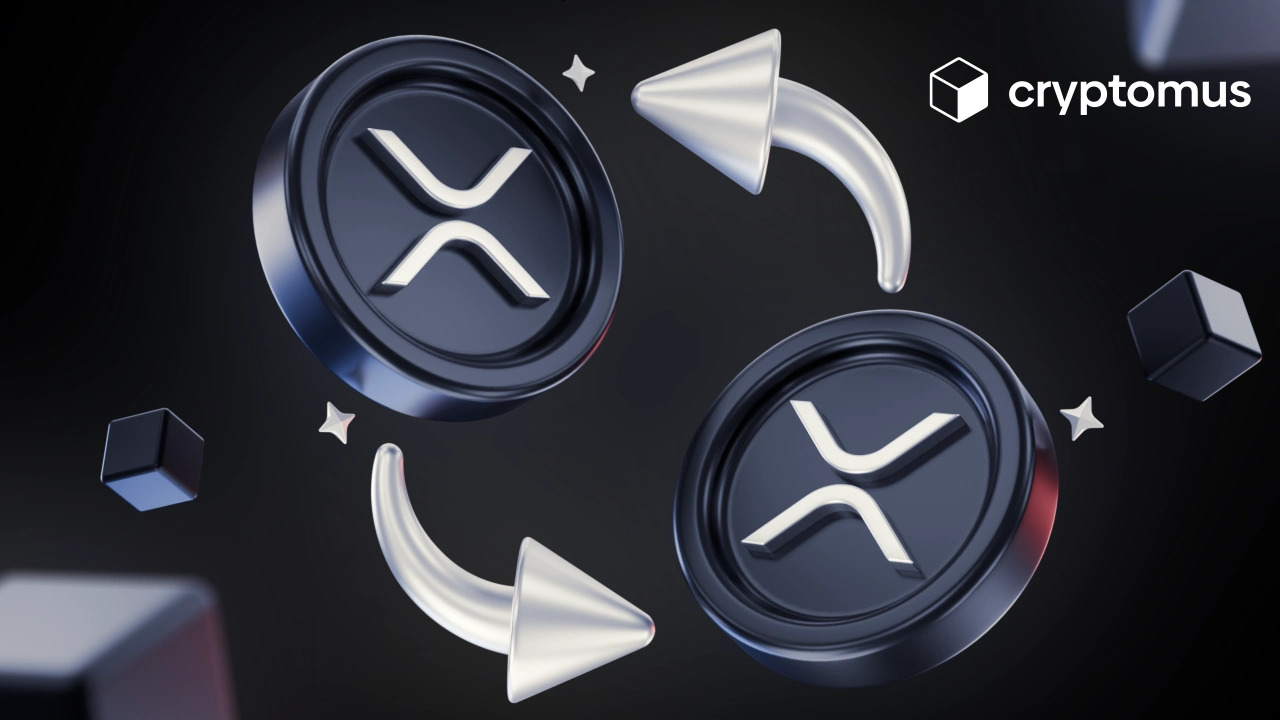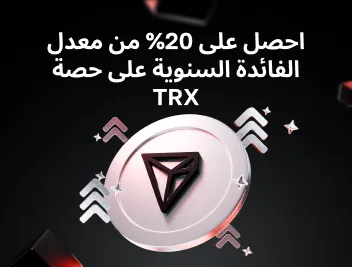
ريبل (XRP) المعاملات: الرسوم، السرعة، الحدود
تم إنشاء شبكة بلوكتشين ريبل في عام 2012 لتحويل الأموال بسهولة على مستوى العالم. تدعم العقود الذكية والتطبيقات اللامركزية (dApps) ولديها عملة مشفرة خاصة بها تسمى XRP. على الرغم من مرور فترة على إطلاقها، إلا أن العملة بدأت تحظى بشعبية في المعاملات المالية فقط خلال السنوات السبع الأخيرة. ما هي ميزات تحويلات ريبل؟ سنتحدث عن ذلك في هذه المقالة.
عناصر معاملات ريبل
معاملات ريبل هي نقل عملات XRP من محفظة عملات مشفرة إلى أخرى أو من مستخدم إلى آخر. تتضمن هذه المعاملات عناصر محددة تشكل العملية وتحددها. هنا هي:
-
بيانات المعاملة. تشمل عنوان محفظة العملات المشفرة الخاصة بالمرسل والمستلم وعدد العملات للتحويل.
-
التوقيع. وهو تأكيد تشفيري يُظهر أن المرسل هو المالك القانوني للأصول.
-
مفتاح التوقيع العام. هو المفتاح المفتوح لحساب المستخدم ويستخدم للتحقق من صحة توقيع المعاملة.
-
التجزئة (Hash). رقم تعريف فريد أو معرف المعاملة يُستخدم لتتبع حالة العملية المشفرة على الشبكة.
-
العمولة. المبلغ الذي يدفعه المرسل لإتمام المعاملة والحفاظ على أمان الشبكة.
عملية معاملة ريبل
عندما تعرف أساسيات معاملات XRP، يمكنك فهم كيفية معالجتها بشكل أفضل. نستعرضها في المراحل التالية:
-
المرحلة 1: الإنشاء. يقرر مالك عملات XRP تحويلها ويبدأ المعاملة. يقوم بإدخال عنوان محفظة المستلم، ويحدد العملة، البلوكتشين، مقدار العملات المشفرة للإرسال، ويترك تعليقات إذا كان هناك أي.
-
المرحلة 2: الإرسال إلى الشبكة. بعد أن ينقر المستخدم على "إرسال"، يتم توقيع المعاملة وإرسالها إلى شبكة دفتر XRP العام (XRP Ledger)، إلى العقد للتحقق، وإلى خوادم بلوكتشين ريبل.
-
المرحلة 3: التحقق. تستلم العقدة التي تتحقق المعاملة وتفحص صحتها. يقوم بذلك مدققو البلوكتشين الذين ينظرون في صحة التوقيع التشفيري ويقيمون الرصيد للتحقق من وجود أموال كافية لدفع العمولة.
-
المرحلة 4: التوافق. في عمليات التحقق، يستخدم المدققون آلية التوافق للتوصل إلى اتفاق بشأن المعاملات التي ستُدرج في الدفتر العام. يتوصلون إلى توافق حول نسخة واحدة من الدفتر؛ يحدث هذا كل بضع ثوانٍ.
-
المرحلة 5: تحديث الدفتر. بعد التوصل إلى توافق، تُضاف المعاملة المؤكدة إلى النسخة التالية من الدفتر العام. بعد ذلك، تصبح نهائية ولا يمكن عكسها.
-
المرحلة 6: الإكمال. عندما تُضاف المعاملة إلى الدفتر العام، يتم تحديث رصيد المرسل والمستلم تلقائيًا. ثم تُخزن المعاملة في السجل للاستخدام المستقبلي.
على الرغم من التحقق الدقيق من المعاملة على الشبكة، من المهم التفكير في أمان الأصول بشكل إضافي. لتحقيق ذلك، يجب عليك استخدام موفر محفظة عملات مشفرة موثوق به أو منصة تبادل. على سبيل المثال، عند استخدام محفظة Cryptomus، ستكون عملات XRP الخاصة بك محمية بتدابير أمان قوية مثل مكافحة غسيل الأموال (AML) والمصادقة الثنائية (2FA)، لذا يمكنك إجراء التحويلات هنا براحة بال. علاوة على ذلك، توفر المحفظة ميزة الراحة مثل تحويل العملات في الوقت الفعلي.

رسوم معاملات ريبل
مبدأ كيفية عمل العمولة على شبكة ريبل يختلف عن العديد من شبكات البلوكتشين الأخرى. على سبيل المثال، بالمقارنة مع إيثيريوم، لا تُدفع رسوم معاملات ريبل للمدققين مقابل عملهم في التحقق. هنا، توجد الرسوم لمنع البريد العشوائي والحفاظ على أمان الشبكة. بعد ذلك، تُدمر العمولة وتُزال من إجمالي مخزون XRP، مما يحد من عرض العملات مع مرور الوقت.
أما بالنسبة لمقدار الرسوم على شبكة ريبل، فهي تظل مستقرة نسبيًا دائمًا. يمكن أن تزيد فقط في حالات الازدحام الشديد في الشبكة لإعطاء الأولوية للمعاملات العاجلة. تكلفة معاملة ريبل القياسية هي 0.00001 XRP في المتوسط، وهو أقل من سنت واحد. هذا يعني أن المعاملات باستخدام XRP تعتبر تقريبًا مجانية.
كم يستغرق نقل ريبل؟
بالإضافة إلى الرسوم المنخفضة، تُعرف معاملات ريبل أيضًا بسرعتها العالية. وبالتالي، فإن متوسط وقت المعالجة والتأكيد لتحويلات XRP هو 3-5 ثوانٍ. قد يزيد قليلاً فقط في حالات ازدحام الشبكة الشديد، ولكن يحدث ذلك نادرًا.
إذا تحدثنا عن عدد المعاملات في الثانية، فإن شبكة ريبل قادرة على معالجة 1,500 معاملة. هذا أقل من بعض شبكات البلوكتشين الأخرى، ولكن مع سرعة معالجة كل عملية تحويل فردية، تصبح ريبل اختيارًا مثاليًا للمدفوعات، بما في ذلك المدفوعات الدولية.
لماذا تكون معاملة ريبل قيد الانتظار؟
قد يواجه بعض المستخدمين تأخيرات في معاملات XRP، وهو أمر قد يبدو مفاجئًا في شبكة عالية السرعة. ومع ذلك، يمكن أن يحدث ذلك فقط في حالات استثنائية، ويرجع ذلك أساسًا إلى المشاكل التقنية في الشبكة. لنلقِ نظرة على الأسباب المحتملة للتأخير بمزيد من التفصيل:
-
ازدحام الشبكة. إذا تم معالجة عدد كبير من المعاملات على الشبكة في نفس الوقت، فقد يسبب ذلك تأخيرات.
-
تحديث دفتر XRP. في بعض الأحيان، تحدث أعمال صيانة فنية وتحديثات في الدفتر، مما قد يؤدي أيضًا إلى إيقاف معالجة المعاملات لفترة.
-
مشكلات في المحفظة أو التبادل. قد يرتبط وضع المعاملة المعلق بالمعالجة الداخلية للمنصة المستقبلة. على سبيل المثال، تقوم بعض المنصات بإجراء معاملات مجمعة.
-
عمولة غير كافية. على الرغم من أن الرسوم على شبكة ريبل منخفضة جدًا، إلا أنه في أوقات النشاط الشبكي العالي، قد تستغرق معاملة بعمولة قياسية وقتًا أطول في المعالجة مقارنة بالمعاملات الأخرى.
كقاعدة عامة، تُنفذ معاملات XRP بسرعة، وحتى في حالة التأخير المرتبط بالشبكة، يتم تأكيدها قريبًا. لمعرفة حالة معاملتك بدقة، يمكنك دائمًا التحقق منها.
كيف تتحقق من معاملات XRP؟
كما ذكرنا سابقًا، يُستخدم تجزئة المعاملة للتحقق من حالتها. يساعدك في العثور على تحويلك عبر خدمات خاصة تُسمى مستكشفات البلوكتشين. إليك الخوارزمية خطوة بخطوة التي يجب اتباعها لاكتشاف تحويلك:
-
الخطوة 1: احصل على التجزئة. قم بتسجيل الدخول إلى سجل المعاملات في محفظتك أو المنصة التي تم منها التحويل. ابحث عن تجزئة المعاملة هناك ونسخها.
-
الخطوة 2: اختر مستكشف البلوكتشين. يمكنك استخدام خدمة “XRP Scan” أو “Bithimp” للبحث عن معاملة XRP الخاصة بك، أو يمكنك القيام بذلك باستخدام مستكشف البلوكتشين على المنصة التي استخدمتها.
-
الخطوة 3: ابحث عن المعاملة. أدخل رقم التجزئة الخاص بالتحويل في شريط البحث الخاص بالخدمة المحددة. اضغط على “Enter"، وستظهر المعاملة أمامك.
-
الخطوة 4: مراجعة بيانات المعاملة. انقر على المعاملة التي تظهر في نتيجة البحث، وستنتقل إلى صفحة المعلومات. هناك سترى جميع بيانات التحويل: عناوين المرسل والمستلم، مقدار العملات، العمولة، الطابع الزمني، رقم الكتلة، والحالة. سيمنحك الأخير معلومات أساسية حول ما إذا كانت المعاملة ناجحة أو معلقة أو مرفوضة.
من خلال معرفة حالة معاملة XRP الخاصة بك، ستكون قادرًا على فهم أفضل لموعد توقع وصول الأموال أو اتخاذ إجراءات في حالة فشل التحويل. كما يُنصح بمتابعة سوق العملات المشفرة لتبقى على اطلاع بالتغييرات التي قد تسبب التأخيرات أو مشكلات أخرى في الشبكة.
تقدم ريبل مزايا في التحويلات، مثل سرعة المعالجة العالية والرسوم المنخفضة. هذه الشروط تجعل هذه الشبكة البلوكتشينية وعملتها حلًا شائعًا للمعاملات داخل البلد و للتحويلات عبر الحدود. إذا كانت العمليات المتكررة والكفاءة من حيث التكلفة هي أولوياتك، فإن ريبل هو الخيار المثالي لك.
نأمل أن تكون قد استفدت من دليلنا لفهم خصوصيات معاملات ريبل، وأن تكون الآن قادرًا على اتخاذ قرار مدروس بشأن استخدام هذه الشبكة وعملتها XRP. إذا كان لا يزال لديك أي أسئلة، لا تتردد في طرحها في التعليقات!
قيم المقال








تعليقات
0
يجب أن تكون مسجلا للدخول لتكتب تعليق